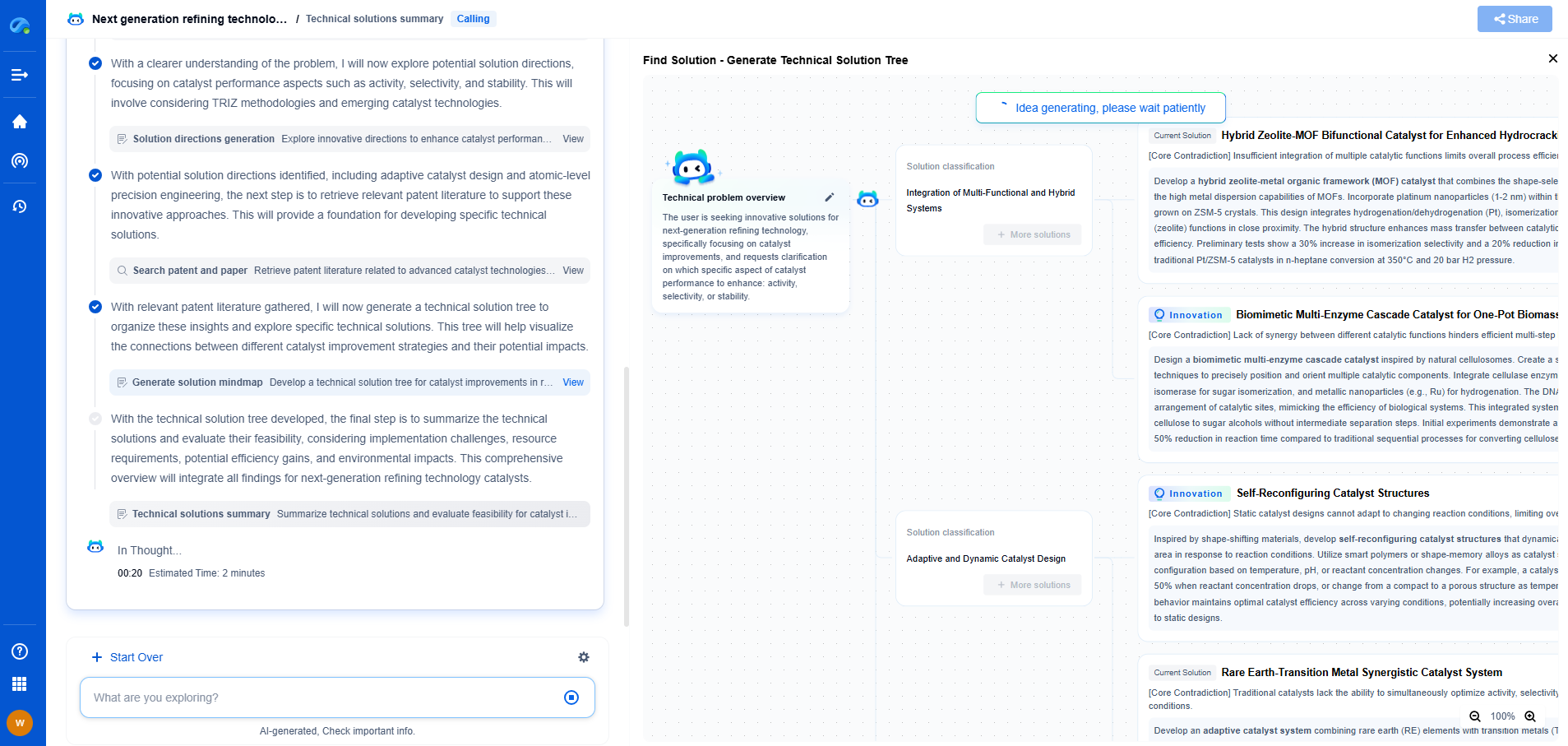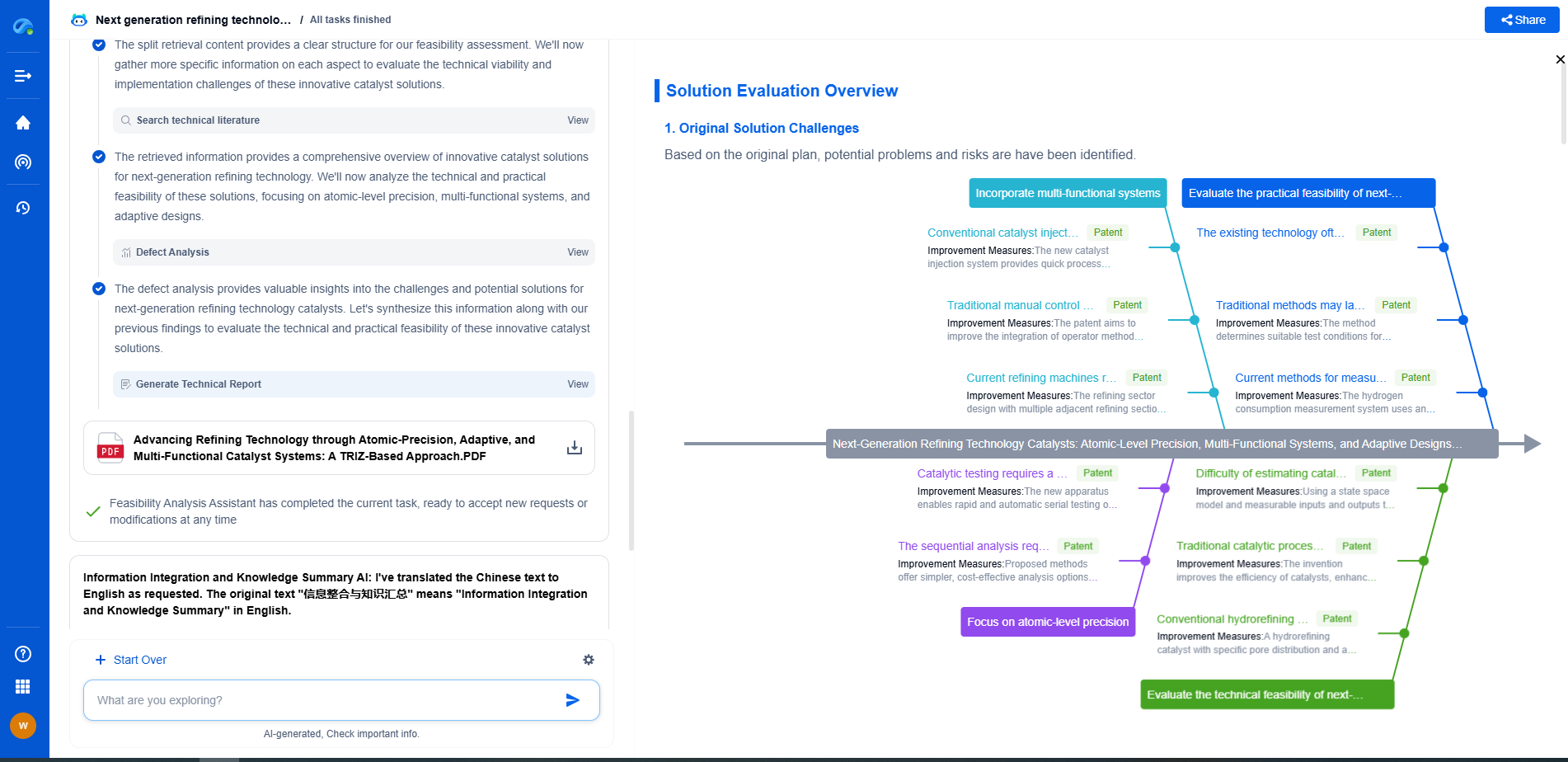Role of smart sensors in drilling fluid monitoring systems
JUN 20, 2025 |
Drilling fluid, commonly known as "mud," is the lifeblood of drilling operations. It plays a pivotal role in maintaining wellbore stability, cooling and lubricating the drill bit, carrying drill cuttings to the surface, and controlling formation pressures. Effective monitoring of drilling fluid parameters is crucial to ensuring optimal drilling performance and avoiding costly downtime. This is where smart sensors come into play, revolutionizing traditional methods of monitoring and enhancing the precision and reliability of the process.
Understanding Smart Sensors
Smart sensors are advanced devices equipped with data processing capabilities, allowing them to analyze and interpret signals from physical phenomena. Unlike conventional sensors, smart sensors can perform complex functions such as self-calibration, data filtering, and wireless communication. These capabilities make them particularly suited for challenging environments, such as those encountered in drilling operations.
The Role of Smart Sensors in Drilling Fluid Monitoring
1. Real-time Data Collection
One of the significant advantages of smart sensors is their ability to collect and transmit real-time data. In drilling operations, where conditions can change rapidly, real-time monitoring is essential. Smart sensors provide continuous updates on the properties of drilling fluid, such as density, viscosity, temperature, and pressure. This information enables operators to make informed decisions quickly, optimizing the drilling process and minimizing risks.
2. Enhanced Accuracy and Precision
Traditional sensors often require frequent calibration and are prone to errors due to environmental factors. Smart sensors, on the other hand, are designed to automatically calibrate themselves and compensate for external influences. This level of accuracy is crucial in drilling fluid monitoring, where even minor discrepancies can lead to significant operational challenges. By providing precise data, smart sensors help maintain the integrity of drilling operations.
3. Predictive Maintenance and Early Problem Detection
Smart sensors are capable of analyzing historical data to predict potential issues before they occur. This predictive maintenance capability allows drilling operators to address problems proactively, reducing unplanned downtime and maintenance costs. For instance, by detecting changes in fluid properties indicative of equipment wear or malfunction, operators can schedule maintenance activities without interrupting drilling operations.
4. Integration with Automated Systems
The integration of smart sensors with automated systems and control software enhances the efficiency of drilling fluid monitoring. Automated systems can respond immediately to the data provided by smart sensors, adjusting fluid properties or drilling parameters as needed. This seamless interaction between sensors and automation minimizes human intervention, reduces error rates, and ensures continuous optimization of drilling performance.
5. Environmental and Safety Benefits
By providing accurate and timely data, smart sensors contribute to safer drilling operations and environmental protection. Early detection of anomalies in fluid properties can prevent blowouts and spills, safeguarding both personnel and the environment. Moreover, smart sensors can help in monitoring compliance with environmental regulations, ensuring that drilling operations are conducted responsibly.
Challenges and Future Prospects
While the adoption of smart sensors in drilling fluid monitoring systems offers numerous benefits, it is not without challenges. The harsh conditions of drilling environments, including high temperatures and pressures, require sensors to be robust and reliable. Furthermore, the integration of smart sensors into existing infrastructure demands careful planning and investment.
Looking ahead, advances in sensor technology, including the development of even more resilient materials and enhanced data processing algorithms, promise to further improve drilling fluid monitoring systems. As the industry continues to innovate, the use of smart sensors will likely expand, leading to more efficient, safe, and environmentally responsible drilling practices.
Conclusion
Smart sensors are transforming the landscape of drilling fluid monitoring systems, offering real-time data collection, enhanced accuracy, predictive maintenance capabilities, and integration with automated systems. These advancements not only improve the efficiency and safety of drilling operations but also contribute to environmental protection and regulatory compliance. As technology continues to evolve, the role of smart sensors in drilling fluid monitoring is set to grow, paving the way for a more sustainable and productive future in the drilling industry.
Navigating the Complexities of Drilling Innovation? Let AI Do the Heavy Lifting
In an industry where subsurface conditions, materials science, and drilling dynamics evolve rapidly, staying ahead of technical innovation and protecting your intellectual property can be overwhelming.
Patsnap Eureka, our cutting-edge AI assistant, is built for R&D and IP professionals in high-tech industries like drilling technologies. Whether you're optimizing rotary steerable systems, evaluating high-temperature materials, or exploring next-gen automation in directional drilling, Eureka enables real-time analysis of the latest patents, technology landscapes, and competitive movements—all from one intelligent, intuitive platform.
Ready to accelerate your development cycle and make strategic decisions with confidence? Explore Patsnap Eureka today—where smart drilling starts with smarter insights.
- R&D
- Intellectual Property
- Life Sciences
- Materials
- Tech Scout
- Unparalleled Data Quality
- Higher Quality Content
- 60% Fewer Hallucinations
Browse by: Latest US Patents, China's latest patents, Technical Efficacy Thesaurus, Application Domain, Technology Topic, Popular Technical Reports.
© 2025 PatSnap. All rights reserved.Legal|Privacy policy|Modern Slavery Act Transparency Statement|Sitemap|About US| Contact US: help@patsnap.com

